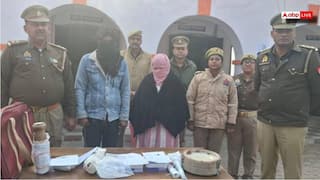Explorer
Old Rs 500 notes to be accepted at petrol pumps & for buying airline tickets till Dec 2, as against Dec 15

New Delhi: In a sudden and shocking decision, old Rs 500 notes will accepted at petrol pumps and for buying airline tickets till December 2nd, as against December 15. Meanwhile, people queued up outside ATMs in Delhi on the first payday after demonetisation. The demonetisation of Rs 500 and Rs 1000 banknotes was a policy enacted by the Central government on 8 November 2016. All Rs 500 and Rs 1000 banknotes of the ceased to be legal tender in the country from 9 November 2016.
Follow Breaking News on ABP Live for more latest stories and trending topics. Watch breaking news and top headlines online on ABP News LIVE TV
Read more
Top Headlines
India
Cities
World
Personal Finance






































